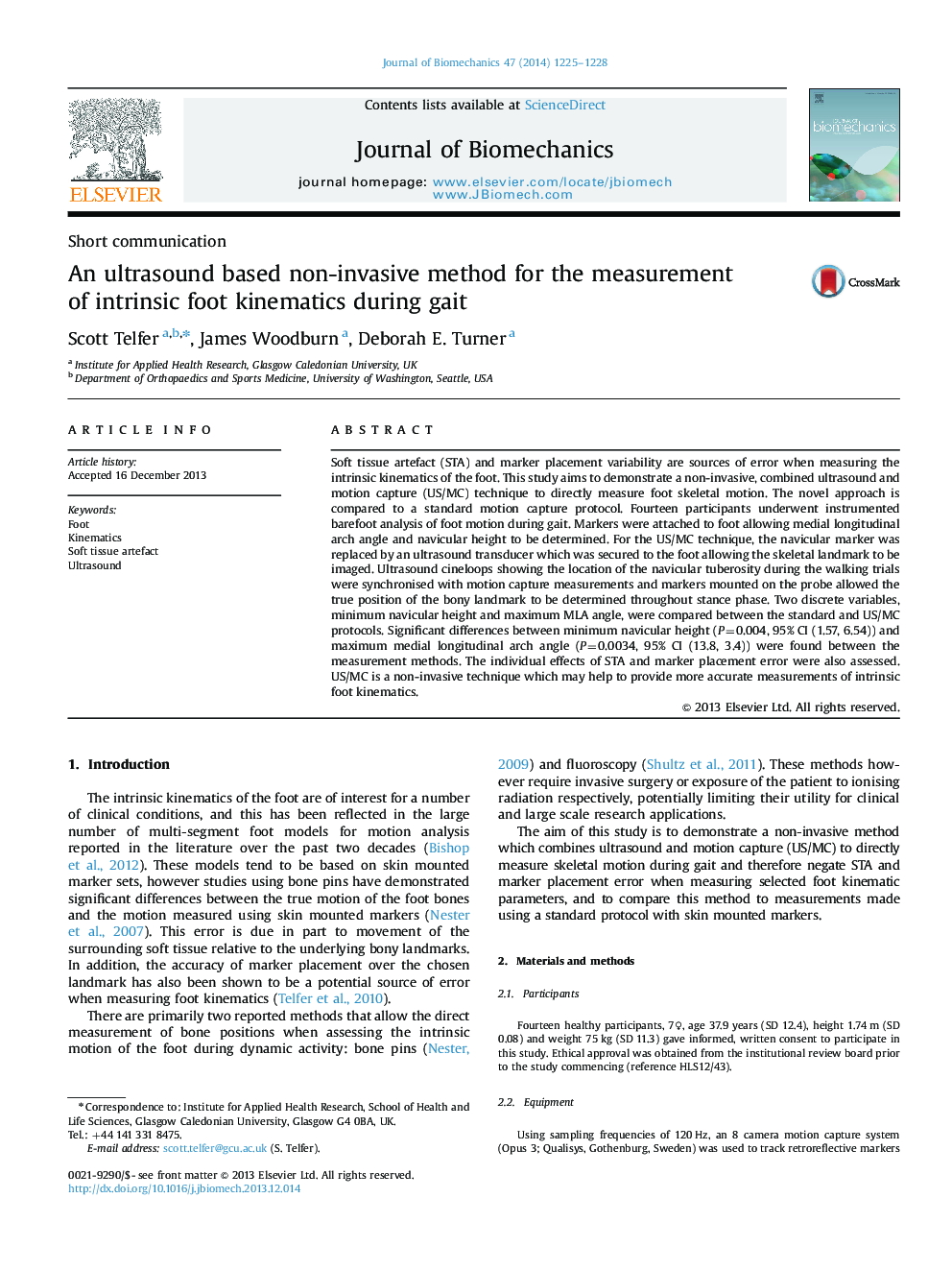| Article ID | Journal | Published Year | Pages | File Type |
|---|---|---|---|---|
| 10432459 | Journal of Biomechanics | 2014 | 4 Pages |
Abstract
Soft tissue artefact (STA) and marker placement variability are sources of error when measuring the intrinsic kinematics of the foot. This study aims to demonstrate a non-invasive, combined ultrasound and motion capture (US/MC) technique to directly measure foot skeletal motion. The novel approach is compared to a standard motion capture protocol. Fourteen participants underwent instrumented barefoot analysis of foot motion during gait. Markers were attached to foot allowing medial longitudinal arch angle and navicular height to be determined. For the US/MC technique, the navicular marker was replaced by an ultrasound transducer which was secured to the foot allowing the skeletal landmark to be imaged. Ultrasound cineloops showing the location of the navicular tuberosity during the walking trials were synchronised with motion capture measurements and markers mounted on the probe allowed the true position of the bony landmark to be determined throughout stance phase. Two discrete variables, minimum navicular height and maximum MLA angle, were compared between the standard and US/MC protocols. Significant differences between minimum navicular height (P=0.004, 95% CI (1.57, 6.54)) and maximum medial longitudinal arch angle (P=0.0034, 95% CI (13.8, 3.4)) were found between the measurement methods. The individual effects of STA and marker placement error were also assessed. US/MC is a non-invasive technique which may help to provide more accurate measurements of intrinsic foot kinematics.
Related Topics
Physical Sciences and Engineering
Engineering
Biomedical Engineering
Authors
Scott Telfer, James Woodburn, Deborah E. Turner,
